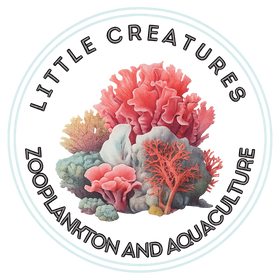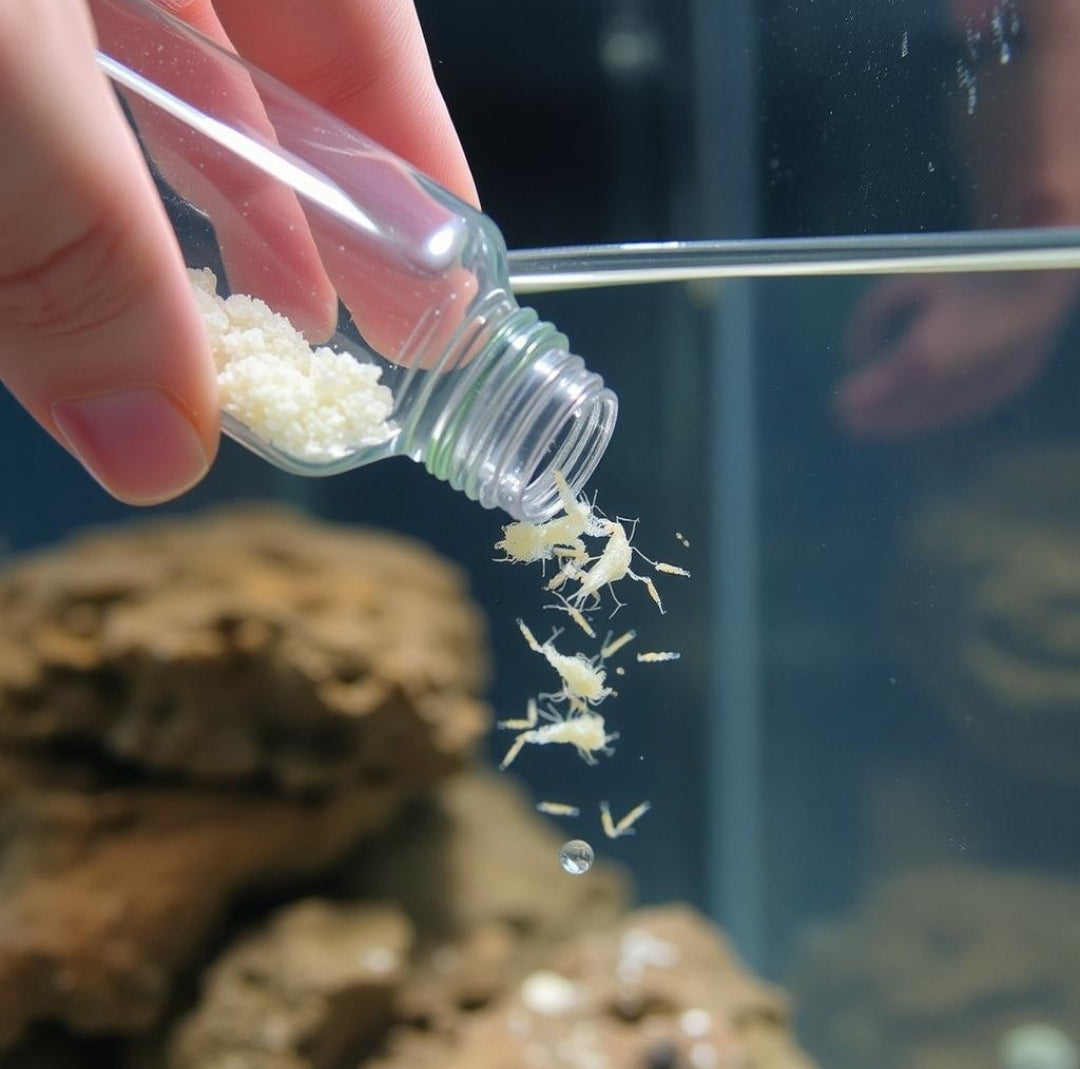🐛 How to Dose Live Copepods in Your Reef Tank
Build biodiversity. Reduce nuisance algae. Support coral and fish health.
Adding live copepods to your saltwater aquarium is one of the most effective ways to establish a thriving microfauna population. In this guide, you’ll learn how to dose copepods properly to maximize survival, reproduction, and long-term reef benefits.
🌊 Why Dose Copepods?
Copepods are essential members of a balanced reef ecosystem. They:
- 🐟 Feed finicky fish like mandarins and wrasses
- 🧼 Help consume detritus and film algae
- 🌐 Contribute to biodiversity and nutrient cycling
- 🌸 Support coral and filter feeder health indirectly
But simply pouring a bottle into your tank won’t guarantee results. Let’s walk through the step-by-step dosing process to ensure success.
🧊 Step 1: Acclimate the Bottle
Before adding copepods, float the sealed bottle in your display tank or sump for 15–30 minutes. This equalizes temperature and prevents thermal shock.
❗ Never pour chilled copepods directly into warm tank water — this can severely reduce survival.
Once acclimated, gently swirl the bottle to mix copepods evenly before dosing.
🌙 Step 2: Dose After Lights Out
Best time to dose? After lights out.
Most copepod species are light-sensitive and more active in the dark. Dosing at night:
- 🛡️ Reduces predation from fish
- 🪨 Helps pods find hiding spots
- ⚡ Encourages faster settlement
If full darkness isn’t possible, dosing during light ramp-down is the next best option.
🪸 Step 3: Where to Add Copepods
Maximize survival by pouring copepods into low-flow, shaded areas such as:
- Rock crevices in the display tank
- Refugium zones with macroalgae
- Sump chambers away from mechanical filtration
💡 Tip: Copepods settle best in protected zones where they can attach to surfaces and reproduce.
Avoid dosing near filter socks, overflows, or high-flow zones.
🔧 Step 4: Turn Off Filtration (Optional)
To prevent copepods from being removed by filtration, you may temporarily turn off:
- Protein skimmers
- Filter socks or roller mats
- UV sterilizers
- Return pumps (if safe)
⏱️ Keep systems off for 30–60 minutes post-dosing.
⚠️ Only do this if you’re confident you’ll turn everything back on. If unsure, leave systems running and focus on protected dosing areas.
🌿 Step 5: Always Add Phytoplankton
Even mature reef tanks may lack enough nutrition for copepod nauplii (juveniles).
Dosing live phytoplankton is essential—it feeds your copepods and helps build a self-sustaining population.
Look for single-strain or multi-strain phytoplankton blends designed for reef aquariums.
📅 How Often Should You Dose Copepods?
- 🐣 Seeding a new tank: Dose once per week for 2–4 weeks
- 🔄 Maintaining populations: Dose fortnightly or monthly
- 🧪 Combating pests (e.g. dinoflagellates): Increase dosing + phytoplankton
Live copepods are reef-safe, coral-safe, and a smart investment in long-term tank health.
✅ Final Tips for Dosing Success
- ✅ Float the bottle to acclimate temperature
- ✅ Dose after lights out
- ✅ Target low-flow, darker areas
- ✅ Turn off filtration if possible
- ✅ Always add phytoplankton
- ✅ Repeat dosing regularly
🛒 Shop Fresh Copepods & Phytoplankton in Australia
At Little Creatures Zooplankton & Aquaculture, we culture high-quality live copepods and phytoplankton in-house, shipping fresh across Australia. Whether you're seeding a new tank or maintaining a vibrant reef, our blends are designed to work.
👉 Browse our Copepods & Phytoplankton Collection

